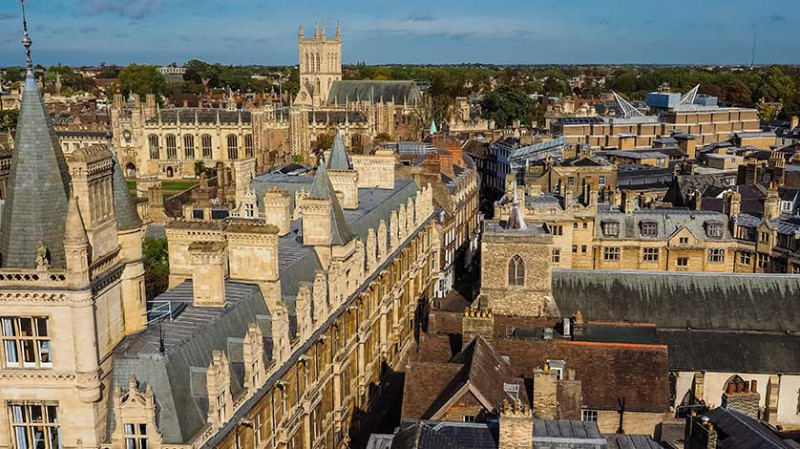
Nestled along the banks of the River Cam, just over 50 miles north of London, the picturesque city of Cambridge is more than just a university town—it's a captivating blend of history, innovation, and striking architecture. A walk through its cobbled streets offers glimpses into centuries of academic excellence and cultural influence, wrapped in a quintessentially English charm that attracts DIY enthusiasts, designers, architects, and curious travelers alike.
Cambridge is perhaps best known as the home of the University of Cambridge, founded in 1209. Over the centuries, it has nurtured some of the brightest minds in science, literature, and politics—from Sir Isaac Newton to Stephen Hawking. But its allure stretches beyond academia. For creatives and design-minded individuals, it offers a masterclass in architectural evolution and timeless style.
For professionals in the trades or design industries, Cambridge is a treasure trove of inspiration. Whether you’re a kitchen fitter admiring the oak panelling of Trinity College's halls, or a young urban dweller revamping a rental flat with heritage-style wallpapers, Cambridge’s mix of tradition and contemporary flair is bound to offer ideas worth borrowing.
Architectural Tour: A Palette of Styles Across the Centuries
Cambridge is an open-air museum of architecture. From the elegance of Gothic spires to the clean lines of modernist buildings, the city reflects the layering of historical periods, each contributing its own design language. King's College Chapel, with its fan-vaulted ceiling and monumental stained-glass windows, is a textbook example of Perpendicular Gothic architecture and a must-see for anyone interested in historic interiors and stone craftsmanship.
Moving into the Georgian period, you'll notice the uniformity and proportion that influenced later domestic architectural design. For home renovators, these classic shapes and materials—from sash windows to Flemish bond brickwork—offer a wealth of inspiration for both restoration and modern reinterpretation.
On the more modern end, buildings like The Cripps Building at St John's College present minimalist forms that contrast yet harmonize with their older surroundings. For designers and decorators, this juxtaposition is a lesson in blending eras—something increasingly popular in home design across UK urban areas.
Materials like York stone, handmade bricks, oak, and even lead detailing remain as relevant today as they were centuries ago, especially for architects and tradespeople looking to blend authenticity with practicality. Cambridge is a living archive of durable and beautiful materials that endure trough time.
DIY Visits: Ideas for Home Projects Inspired by Cambridge
As a DIY enthusiast or design-savvy homeowner, there’s much to take home from a visit to Cambridge. A guided or self-paced walking tour through the college courtyards, museum gardens, and historic alleys unveils layout patterns and landscaping ideas that can be scaled for smaller domestic spaces.
Take, for instance, the cloister-like garden designs seen in college courtyards. These areas often incorporate symmetry, textured hedging, and simple hardscaping—elements that translate well into contemporary garden makeovers. Incorporating such historical symmetry can elevate a typical suburban lawn into something truly elegant.
Windows and doors also offer countless ideas. From classical arched doorways to castellated rooflines, replicating similar features on a smaller scale can add gravitas to a semi-detached Victorian or even a modern terrace. Meanwhile, stone details and wrought iron accents often seen in railings and balconies serve as starting points for small-scale restoration projects or bespoke orders.
For those working on interior schemes, the muted colour palettes of old college libraries, such as deep greens, warm browns, and brushed gold, provide a jumping-off point for paint choices, lighting schemes, and accessory finishes. These elements are increasingly in demand in high-spec UK renovations blending tradition with trend.
Cambridge’s Artistic & Cultural Influence
Beyond bricks and mortar, Cambridge has influenced generations through its art, literature, and scientific zeniths. The Fitzwilliam Museum, located just a short walk from the city centre, houses an impressive collection of fine art, ceramics, and classical antiquities. For product designers, these collections offer ideas in scale, pattern, and colour story that are equally applicable to everything from wallpapers to soft furnishings.
Events such as the Cambridge Literary Festival and Open Studios art events make the city a dynamic cradle for active creatives. These lively gatherings provide not only networking opportunities but also insights into how old settings can be redefined by new narratives—much like one might do when breathing life into a tired flat or Grade II listed property.
For tradesmen and creative professionals, attending such festivals or gallery events is more than recreation—it can be a research mission. Observing how local craftspeople reinterpret historical aesthetics into marketable modern forms can inform everything from fabric choice to drop ceiling design.
Top Creative Attractions to Visit
| Attraction | Design Inspiration | Details |
|---|---|---|
| King’s College Chapel | Gothic architecture, stained glass, vaulted ceilings | Open to visitors; mindful of service hours |
| Fitzwilliam Museum | Classical motifs, fine art patterns, antique details | Free admission |
| The Backs (River Walk) | Landscape planning, water feature integration | Public access with walking trails |
| The Kettle’s Yard | Mid-century modern decor, curated minimalism | Art gallery and house museum |
| Trinity College Great Court | Classical symmetry, stone paving, fountain features | Partially open to tourists |
Tips for Visiting Cambridge
If you’re planning a short trip or weekend break to Cambridge for design and renovation inspiration, consider going outside of university term times. This ensures fewer crowds and more access to college grounds. Opt for walking or hiring a bike to explore the city with ease—many of its most charming design cues are found in quiet mews and lesser-known alleys.
Punting along the Cam offers a unique perspective on the city’s architectural timelines. From the water, the evolution from Tudor to modern becomes a visual storyboard—making it ideal for brainstorming new projects. Take notes, sketches, or photos to inspire your next interior plan or building proposal.
Accommodations range from riverside guesthouses to boutique hotels tucked into converted townhouses. These often blend old and new elements elegantly, providing even more ideas for ensuite styling, space-saving solutions, or period feature restorations.
Don’t forget to stop into an independent bookshop or homeware store. Cambridge is awash with curated shops that offer unique hardware, décor items, and design coffee table books perfectly suited to tradespeople and professionals looking to set their next project apart.
Bringing the Spirit of Cambridge Into Your Next Project
Cambridge is more than a city of scholars—it’s a blueprint of design evolution, a canvas of architectural mastery, and a wellspring of imaginative potential. Whether you're restoring a Georgian townhouse in Bristol, remodeling a kitchen in Leeds, or laying out interiors for a period build in London, Cambridge offers the kind of nuanced aesthetic references that can take your project from good to exceptional.
With its careful balance of tradition and modernity, Cambridge is a city that subtly teaches you how to respect structure while embracing creativity—a lesson any designer, builder, or homeowner can take to heart. Let the textures, tones, lines, and landscapes of this historic university town shape your next build, remodel, or renovation journey.
So next time you're planning a site visit, gather your sketches, notepad, and camera, and take a detour to Cambridge—it might just be the most enlightening design class you’ll attend this year.





